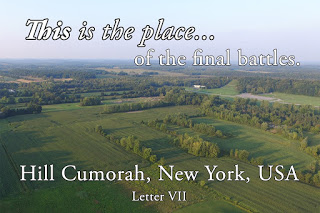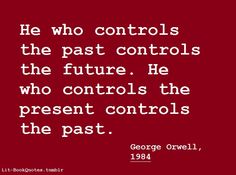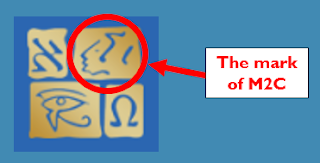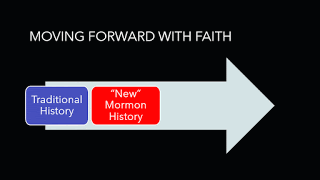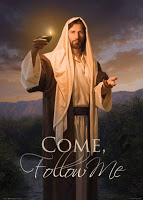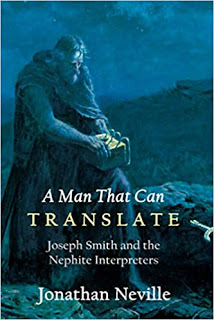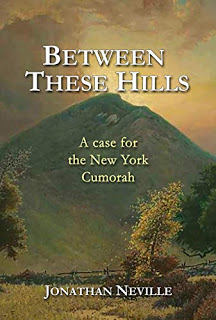Why does Cumorah matter?
Some people new to this blog ask why I focus on the New York Cumorah. It’s a good question, and recent events have prompted a clearer explanation.
The simple answer:
the New York Cumorah is the only known touchstone between the real world and Lehi’s promised land.
By repudiating the teachings of the prophets about Cumorah, LDS scholars have (i) distorted the text of the Book of Mormon, (ii) cast doubt on the credibility and reliability of the prophets, and (iii) misdirected the pursuit of evidence to support the claims of the Book of Mormon.
_____
Joseph Smith and Oliver Cowdery said Cumorah was in western New York because (i) they learned it from their personal experience visiting the repository of Nephite records (Mormon 6:6) and (ii) they knew Cumorah’s location was an essential fact to refute the claim that the Book of Mormon was fiction.
Understanding these key points, Joseph’s contemporaries and successors as Church leaders frequently reiterated the New York location of Cumorah.
But–and this is a key point–we don’t even have to take their word for it. The New York Cumorah is consistent with the text itself and with extrinsic evidence including archaeology, anthropology, geography and geology.
Nevertheless, a handful of LDS scholars decided the prophets were wrong. These scholars adopted the Mesoamerican/two-Cumorahs theory (M2C) that had been developed by RLDS scholars in the early 1900s. Because of their privileged academic status at BYU and CES, these scholars have managed to impose their theories on Latter-day Saints throughout the world.
I think all of these scholars are honorable, fine people with good intentions. They make important and useful contributions to our knowledge base. I like them all personally, but that has nothing to do with the problem of scholars vs. prophets. We can trust, more or less, but we should also verify by making our own informed decisions.
_____
A few days ago on MormonStories.org, Jim Bennett discussed the “Heartlander thing.” (If you don’t know Brother Bennett, he is known for a lengthy response to the CES Letter, which we’ll discuss below). Judging by Brother Bennett’s comments, our LDS credentialed class continue to miss the point.
| Jim Bennett on MormonStories |
During the interview, he said, “This is a huge controversy now. I don’t know if you follow the whole “Heartlander thing.” I think it’s fascinating because you’ve got these guys that, the most important principle of the restored gospel of Jesus Christ is the location of the Hill Cumorah. To me I think, what the heck is your problem? Who cares? It doesn’t matter to me at all. That has nothing to do with anything.” (see reference below)
Saying it doesn’t matter is a natural response for someone experiencing cognitive dissonance.
Despite Brother Bennett’s pejorative characterization, those of us labeled by these scholars as “Heartlanders” spend most of our time serving in the Church, doing missionary and temple work, and testifying of Christ. We think the Book of Mormon is an authentic history, supported by strong evidence in addition to the teachings of the prophets, but we don’t accept the speculations of scholars who repudiate those teachings. Naturally, the scholars are upset.
Those who follow this blog know how sensitive the M2C scholars are about the question of Cumorah. Their cognitive dissonance can’t reconcile the inherent contradiction between claiming to believe and follow the prophets, but also repudiating what the prophets have taught about Cumorah (such as in Letter VII).
On one hand, they openly say the prophets were wrong about the New York Cumorah, that they were speculating, expressing their own incorrect opinions as men, etc. Realize, they are talking not only about Joseph and Oliver, but members of the First Presidency speaking in General Conference.
On the other hand, these same scholars get upset when people point out they are repudiating the prophets. They get defensive. Some get aggressive. (Oddly, some of my critics try to debate these issues, as if I couldn’t make their arguments as well as they do. My time is better spent seeking ways to support and corroborate the teachings of the prophets instead of seeking ways to undermine and disavow–repudiate–those teachings.)
Cognitive dissonance is unpleasant. Usually people deal with it by telling themselves the issue, whatever it is, “doesn’t matter,” the way Brother Bennett did. In the LDS context, this is called “putting it on the shelf,” meaning they’ll set it aside and try not to think about it, hoping for a future resolution.
But the issue is not going away.
_____
The question of Cumorah is not a harmless bit of academic speculation.
Many faithful Latter-day Saints can’t understand why LDS scholars would speculate about Cumorah when we have the unambiguous teachings of the prophets on this topic. We can’t read the minds of the M2C intellectuals, but we can read their publications.
We can see that Book of Mormon Central is spending millions of dollars annually to persuade people that the prophets were wrong and the scholars are correct. There is nothing so predictable as scholars insisting their theories are correct because of their superior credentials. The credentialed class need people to be dependent on them to justify their employment (and fundraising). The handful of LDS scholars who promote M2C have created a facade of like-minded publications and organizations that publish and cite one another’s work, which I call the M2C citation cartel.
Their cognitive dissonance is evident in their disparate treatment of Oliver Cowdery. When discussing Oliver’s teachings about the angel showing him and David Whitmer the plates, they scour every possible source. They examine every letter, newspaper article, or mention in third-party accounts.
See https://evidencecentral.org/evidence/oliver-cowdery.
But when it comes to Cumorah, they ignore (or worse, reject as ignorant speculation) what Oliver explicitly wrote in his essays about Church history, particularly Letter VII. These essays were written with the assistance of Joseph Smith, copied into Joseph’s personal history, and republished at Joseph’s direction multiple times (Times and Seasons, Gospel Reflector, Millennial Star, the Prophet), but Book of Mormon Central claims Oliver’s formal, explicit, and official teaching was wrong–solely because their academic theories contradict what Oliver taught.
_____
We’ve reached the point where BYU professors use the BYU fantasy map to teach students about the Book of Mormon, portraying the Book of Mormon as taking place in a fictional setting. Surveys show that more and more active Latter-day Saints think the Book of Mormon is not an actual history. That trend can only accelerate as the BYU fantasy map becomes de facto doctrine in the minds of BYU and CES students.
Modern LDS scholars claim Joseph and Oliver were ignorant speculators who misled the Church about Cumorah. They say Joseph “didn’t know much about the Book of Mormon,” and whatever he thought at first, by 1842 he changed his mind because of a popular travel book and came to depend on scholarship instead of what he learned directly from Moroni and his personal experiences.
Leveraging their positions of trust as teachers at BYU and CES, they have used the academic cycle to persuade several generations of LDS students to prefer their M2C theories over the teachings of the prophets–mostly by censoring Cumorah.
Influential scholars have sought to eliminate cognitive dissonance among Church members by censoring the teachings of the prophets about Cumorah. They have managed to “disappear” references to Cumorah from curriculum, media, visitors centers, and even Church history, as we see in the Saints book. The current version of the Gospel Topics entry on Book of Mormon geography doesn’t mention Cumorah; instead, it frames Joseph Smith as equivocal and uncertain, exactly how our M2C citation cartel wants him to appear. (That entry was revised after I pointed out obvious errors, and it could and should be revised again to address Cumorah.)
We even have the Interpreter Foundation, which completely rejects Oliver’s teaching about Cumorah, creating a movie about the Three Witnesses–as if people won’t see the absurdity of claiming Oliver was only correct when he agreed with what modern scholars believe. Actually, all three of the witnesses referred to the “hill in New York” as the ancient Cumorah, but you won’t see that in their movie.
The problem is, the teachings of the prophets are available for everyone to see. People can read Letter VII right in Joseph’s own history, right in the Joseph Smith Papers.
https://www.josephsmithpapers.org/paper-summary/history-1834-1836/90
Fortunately, there are faithful Latter-day Saints who still accept the teachings of the prophets about Cumorah and can help others understand them. (Not just me, but many others.)
Unfortunately, there are many critics and nonbelievers who use the futile censorship efforts of the M2C citation cartel to sow confusion among new and young Latter-day Saints who have been taught M2C exclusively and have never heard the teachings of the prophets about Cumorah.
Which brings us to the CES Letter.
_____
Some time ago, Brother Bennett wrote a response to the CES Letter that (according to Bennett) Book of Mormon Central spent a lot of money promoting. That’s not surprising because in his response, Brother Bennett promoted both M2C and SITH. He claimed M2C started with the anonymous 1842 editorials in the Times and Seasons.
Outside of the M2C bubble, informed Latter-day Saints know that the 1842 editorials said nothing about Cumorah. They know that in 1841, the Times and Seasons published the essays about Cumorah that unambiguously placed the site in western New York. They know that in 1842, in two signed letters published in the Times and Seasons, Joseph Smith refuted Orson Pratt’s theory about Central America and referred to Cumorah in New York.
Those living inside the M2C bubble, however, either don’t know these details of Church history or have rationalized them away.
_____
Let’s look at how Brother Bennett dealt with the Cumorah question in his response to the CES Letter. Here (in green) are the passages from the CES Letter. Brother Bennett’s responses are in blue. My comments in red. (To see this in the original, go to https://canonizer.com/files/reply.pdf and search for “Cumorah.”)
6. Archaeology: There is absolutely no archaeological evidence to directly support the Book of Mormon or the Nephites and Lamanites, who were supposed to have numbered in the millions.
Short Answer: Nonsense. There is a great deal of direct Old World archaeological evidence for the Book of Mormon, as well as a growing body of archaeological evidence in the New World, too.
[Brother Bennett discusses the Old World evidence, then says] I’ll get to the New World evidence as I address the rest of your question.
This is one of the reasons why unofficial apologists have developed the Limited Geography Model (it happened in Central or South America)…
No. The theory that the Book of Mormon took place in Central or South America can be documented to have been around since at least 1842, when the Times and Seasons, the Church paper edited by Joseph Smith at the time, published three unsigned editorials detailing Mesoamerican Book of Mormon theories.
[These are the anonymous articles that say nothing about Cumorah and, contrary to Brother Bennett’s representation here, reflected the hemispheric model. IOW, CES Letter was correct, and Bennett was wrong.
Ironically, just a few months earlier, the Times and Seasons published Joseph Smith’s signed Wentworth letter, in which Joseph rejected Orson Pratt’s hemispheric model (including Central America) by emphasizing that the remnant of Lehi’s posterity are “the Indians that live in this country.”
Bennett also cited the equivocal Bernhisel letter that was obviously drafted by Wilford Woodruff and not even signed by Joseph Smith. Nevertheless, he writes…]
To say that the idea of the Book of Mormon in a Central American setting is a late product of “unofficial apologists” is to ignore the words of the prophet himself.
… and claim that the Hill Cumorah mentioned as the final battle of the Nephites is not in Palmyra, New York but is elsewhere. This is in direct contradiction to what Joseph Smith and other prophets have taught.
It is not, in fact, in direct contradiction to anything Joseph Smith taught. Joseph never made reference to the hill in New York as Cumorah.
[The M2C citation cartel simply censors historical evidence that contradicts their theories. Again, CES Letter is correct and Bennett is wrong. Joseph’s mother quoted Joseph referring to the Hill Cumorah in 1827, before he even got the plates. He could only have learned that from Moroni. In 1831, Parley P. Pratt explained that Moroni called the hill Cumorah anciently. And, of course, Joseph helped write Letter VII, had it copied into his history as part of his life story, etc.]
No identification of the drumlin in New York as Cumorah can be found in the Doctrine and Covenants or any canonized revelation.
[D&C 128:20 was published in 1842 in the Times and Seasons as a letter from Joseph Smith to the Church. “And again, what do we hear? Glad tidings from Cumorah! Moroni, an angel from heaven, declaring the fulfilment of the prophets—the book to be revealed.”
A year earlier, the Times and Seasons had published Letter VII, declaring it was a fact that the final battles of the Jaredites and Nephites took place in the valley west of the “drumlin in New York” named Cumorah. Joseph’s contemporaries who read the Times and Seasons knew what the term “Cumorah” referred to. It was common knowledge. And if the “glad tidings” did not refer to the Book of Mormon that came from the “drumlin in New York,” to what was Joseph referring by the phrase “the book to be revealed” in this verse? Why would Joseph refer to “glad tidings from Cumorah” if Cumorah was a hill in southern Mexico that contained the repository of Nephite records but not the abridged plates?]
Even a cursory reading of the Book of Mormon makes it clear that the Hill Cumorah isn’t the hill in upstate New York where Joseph got the plates.
[Notice, instead of a reading here, cursory or intense, Brother Bennett gives us his own M2C speculation, about what Moroni “presumably” did.]
In Mormon 6:6, Mormon states that he “hid up in the hill Cumorah all the records which had been entrusted to me by the hand of the Lord, save it were these few plates which I gave unto my son Moroni.” [Emphasis added.] So the plates Moroni had after the massive bloody battle at Cumorah were specifically not plates that had been buried there. Moroni then spends decades wandering with these plates, presumably getting as far away from Cumorah as possible, and then buries them up for Joseph to find in an area far removed the Cumorah carnage.
[Orson Pratt explained that the repository was in a separate department of the hill from where Moroni constructed his stone box. This is consistent with what David Whitmer and Oliver Cowdery said. But our M2C citation cartel has to persuade us that two of the three witnesses misled the Church about Cumorah. Actually, Martin Harris also referred to the hill as Cumorah in 1830 as well.]
It is correct to say that many Church leaders have equated the New York Hill with Cumorah, but the Church’s official position on Book of Mormon geography has always been one of neutrality, and they have scrupulously avoided officially jumping in to the long-running debate over where the Book of Mormon took place.
[This is revisionist history and rhetorical commingling. Church leaders have always taught that Cumorah is the hill in New York where Joseph found the plates–no prophet or apostle has ever questioned that teaching. That’s separate from the question of where other events took place, a topic about which Church leaders have not taken a position. The Gospel Topics entry on this conflates the two issues by omitting any reference to Cumorah, but that does not negate the clear historical record.]
Now is it true that many – but not all – prophets, apostles, and members have long believed, and many still believe, that the New York his [sic] is the BoM Cumorah. We keep coming back to infallibility and the lack thereof, and so many of your objections are rooted in the idea that if even apostles make mistakes like this, the Church can’t be true.
[This isn’t a question of “making mistakes.” We have specific declarations that the New York Cumorah is a fact, repeated by many Church leaders for over 150 years. The M2C citation cartel asserts these are mistakes solely because they disagree with the Church leaders and disbelieve what Joseph and Oliver said, based on their personal experience. People can believe and disbelieve whatever they want, but everyone should make informed decisions, not just rely on the obfuscation of the M2C citation cartel.]
That’s not just wrong; it’s bad doctrine.
Mormons ought to realize that agency trumps infallibility every single time. In the absence of direct revelation, speculation fills the gaps. There is no direct revelation about the specific whereabouts of any Book of Mormon location, so prophets and anyone else are perfectly capable of acting in good faith and still reaching incorrect conclusions, which seems to be precisely what they did in this instance. Like it or not, that’s how agency works. That’s mortality. That’s life, in and out of the Church.
[This is clever rhetoric, but it’s a straw man. No one is claiming that Joseph and Oliver taught the New York Cumorah based on revelation (although the absence of a written revelation does not mean they did not receive revelation on the topic). Instead, Joseph said he learned the name even before he translated the plates. Oliver said he and Joseph visited Mormon’s repository of records in the “drumlin in New York” multiple times. David Whitmer said the messenger (one of the 3 Nephites) took the abridged plates from Harmony to Cumorah.]
It also makes little sense in light of the Church’s visitor’s center near the Hill Cumorah in New York and the annual Church-sponsored Hill Cumorah pageants.
It makes a great deal of sense. It’s still the hill where Joseph got the plates, so it’s quite significant to Book of Mormon history.
CES letter makes more sense here. Why refer to the hill as Cumorah if it was just a drumlin in New York thousands of miles away from the “real Cumorah” in southern Mexico? The answer is, because the prophets declared this was the actual hill Cumorah.
Thanks to the efforts of the M2C citation cartel, visitors to the Hill Cumorah today never learn why the hill is named Cumorah! There is no exhibit of the teachings of the prophets. Site missionaries are not allowed to even read Mormon 6:6 with visitors.
We read about two major war battles that took place at the Hill Cumorah (Ramah to the Jaredites) with deaths numbering in the tens of thousands – the last battle between Lamanites and Nephites around 400 AD claimed at least 230,000 deaths on the Nephite side alone. No bones, hair, chariots, swords, armor, or any other evidence of a battle whatsoever has been found at this site.
None in upstate New York, no, which is not at all surprising, as the Book of Mormon itself makes it crystal clear that that’s not where either Cumorah or Ramah actually was
[Now we see the serious problem our M2C scholars have created. CES Letter is merely repeating the expectations raised by the scholars, who have to inflate Book of Mormon populations to be consistent with their Mesoamerican setting. They continually reinterpret the text to fit whatever new discoveries are made in Mesoamerica.
The other approach is to look at the text to inform our expectations.
The text points out that the bodies were not buried. Unburied bodies (including bones and hair) disintegrate rapidly; otherwise, our forests and fields would be full of carcasses of deer, elk, buffalo, etc.
CES Letter exaggerates by mentioning chariots and armor. Mormon 6:9 explains that they had the sword, the bow, the arrow, the ax, and “all manner of weapons of war.” Upstate New York has had abundant evidence of such weapons, dating to Book of Mormon time frames, which are found in museum and collections throughout the area. In the Cumorah area, farmers used to give them to tourists. The Bean children used arrowheads as skipping stones because they were so abundant. The exception, arguably, is “swords,” but even there, the text describes swords “cankered with rust” which means iron, which means we wouldn’t find them after a few years or decades.
In Letter VII, Oliver explained there were fewer than 10,000 Jaredites in their final battles and the numbers of Nephites and Lamanites were in the tens of thousands, not hundreds of thousands. A careful reading of the text shows there were at most 20,000 Nephites killed there, and that’s assuming the phrase “ten thousand” is a literal count and not a translation of a term such as “unit” or “patrols” like in the Old Testament. I compare this to the Battle of Hastings, where 10,000 men were killed without a trace.]
The rest of this section continues with CES Letter repeating the expectations raised by the M2C scholars, with Brother Bennett pointing toward Mesoamerica as the answer.
Instead, informed Latter-day Saints can point to museums and private collections throughout the midwestern and northeastern U.S. to show evidence of exactly the descriptions contained in the Book of Mormon.
By repudiating the teachings of the prophets and refocusing our attention on Mesoamerica, our M2C scholars have created unnecessary problems. The have adopted their own interpretations of the Book of Mormon to fit Mesoamerica. They say Joseph (or whoever put the words on the stone in the hat) mistranslated the text by failing to describe pyramids, Mayans, tapirs, jaguars, jade, and jungles, so they “find” these elements of Mesoamerica themselves. They regularly contort the text to align with the latest archaeological discoveries in Mesoamerica.
___________
To review:
The New York Cumorah was a specific, evidence-based rebuttal to the claim of critics that the Book of Mormon was fiction, composed by Joseph Smith and/or Oliver Cowdery, Sidney Rigdon, Solomon Spalding, etc. Joseph and Oliver never claimed a revelation about Cumorah; instead, they claimed personal experience. Joseph learned the name from Moroni even before he translated the plates. Oliver explained that he and Joseph had visited the repository of Nephite records (Mormon 6:6) inside the hill in New York where Joseph found the plates in Moroni’s stone box–a separate department of the hill (as Orson Pratt explained).
But a handful of LDS intellectuals disagreed. They rejected what the prophets taught and instead sided with a couple of RLDS scholars who, in the early 1900s, had concluded that Cumorah was actually somewhere in southern Mexico. (This is M2C, or the Mesoamerican/two-Cumorahs theory).
Through the academic cycle (because they were teaching at BYU) and over a couple of decades they’ve managed to persuade most of their students to repudiate the teachings of the prophets about Cumorah. Now, the New York Cumorah is being systematically disappeared (I call it de-correlated), to the point where even the Saints book revised Church history to eliminate Cumorah from the historical record.
Consequently, it is critics such as the CES Letter who are educating Latter-day Saints about what the prophets actually taught.
Hopefully, future Latter-day Saints will learn what the prophets have taught about Cumorah within a framework that supports and corroborates these teachings, instead of learning from our M2C scholars that the prophets were wrong.
_____
Transcript of Brother Bennett’s interview on MormonStories.org.
Source: About Central America
